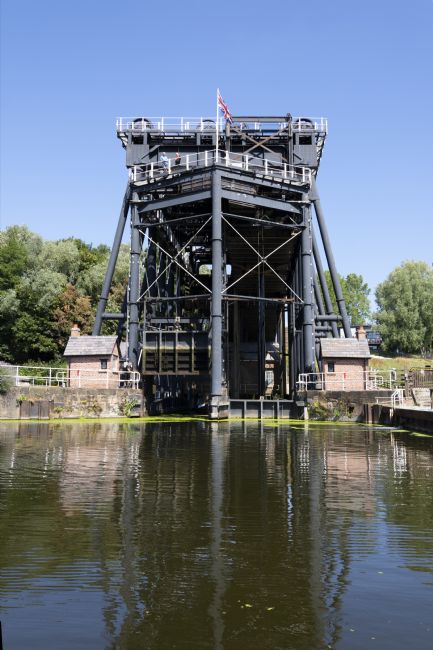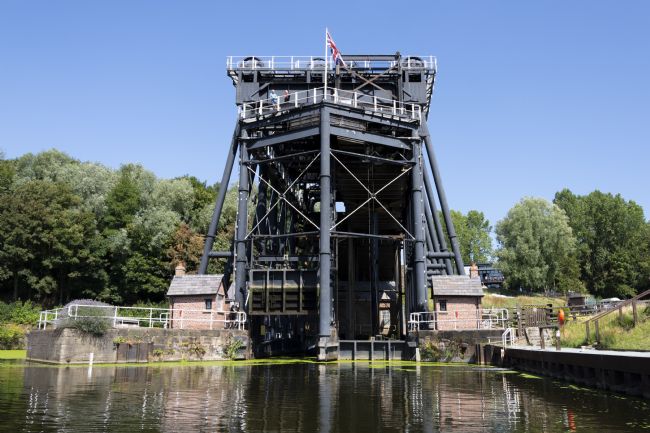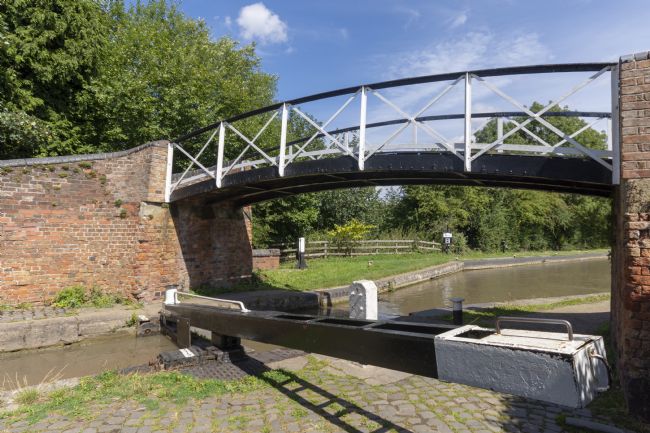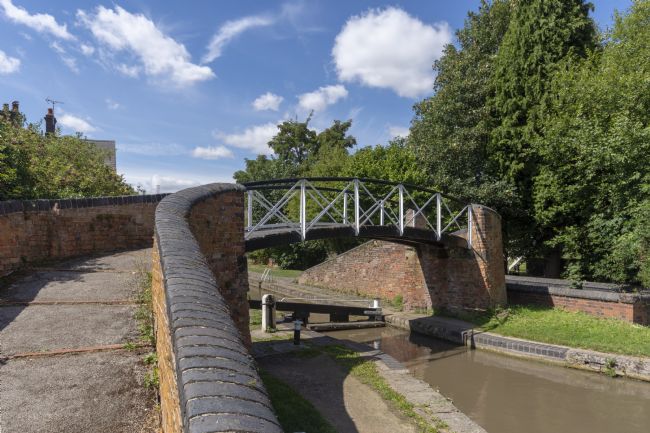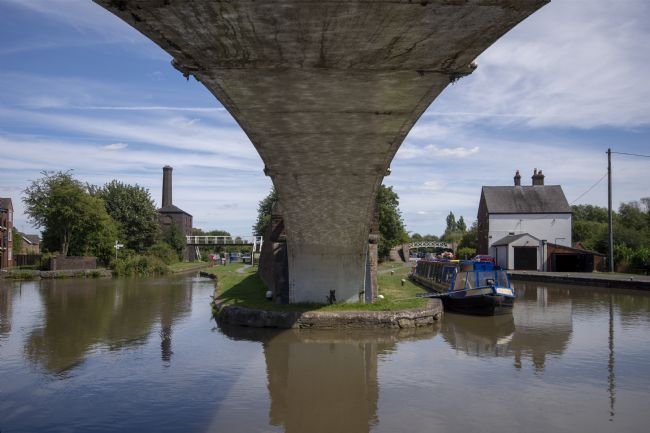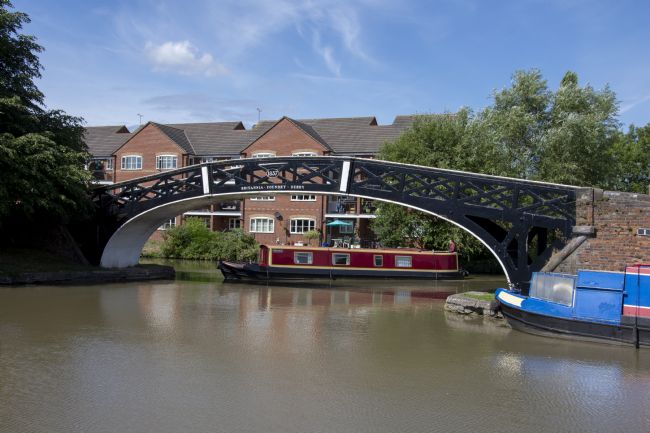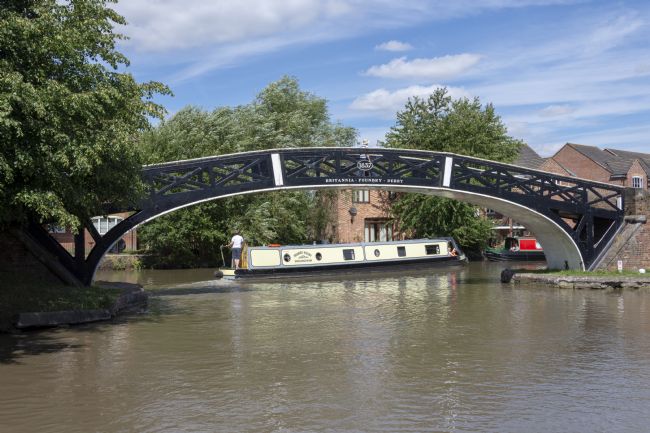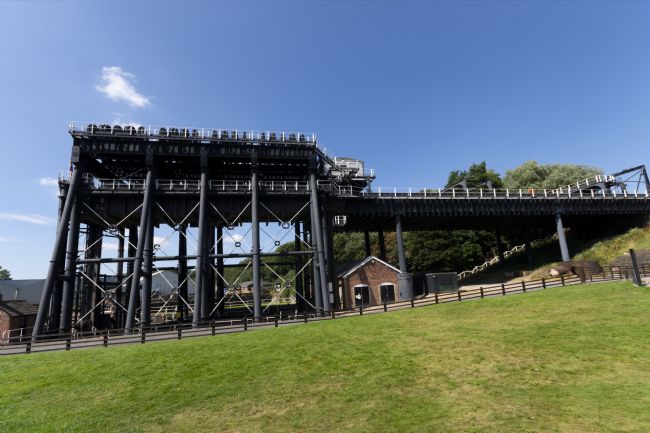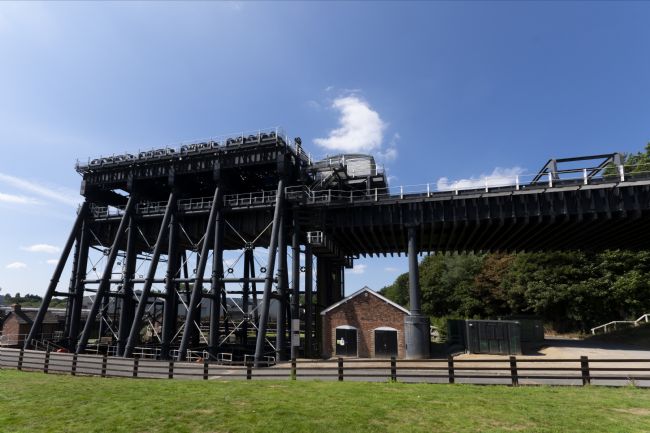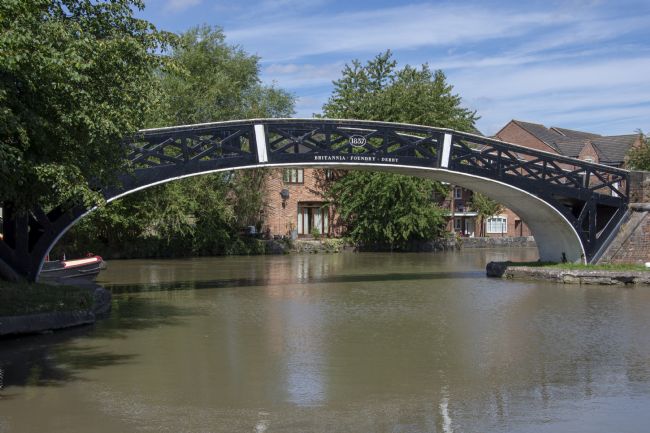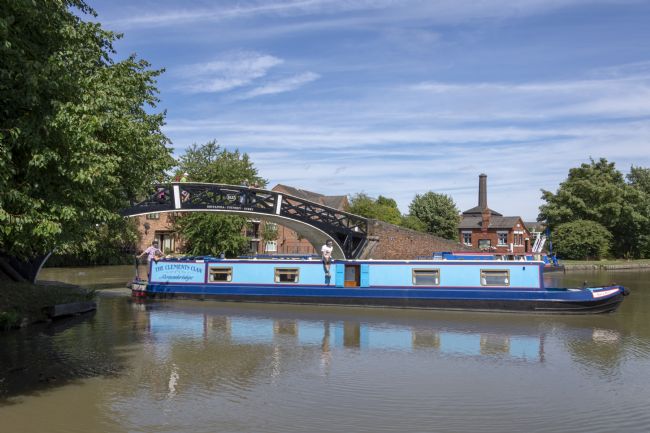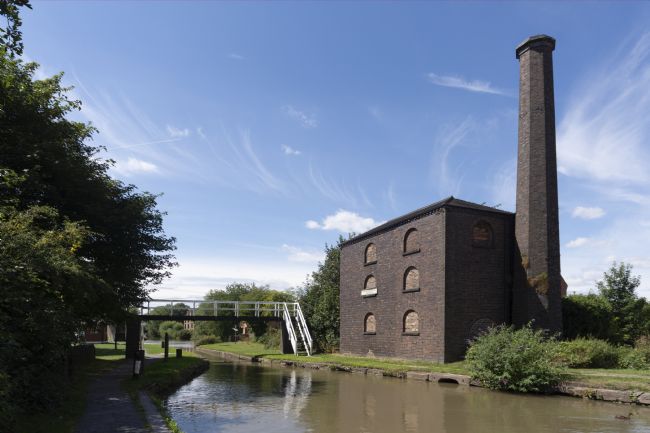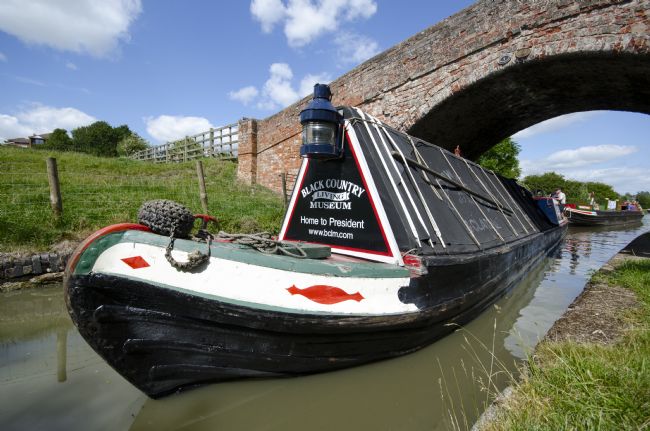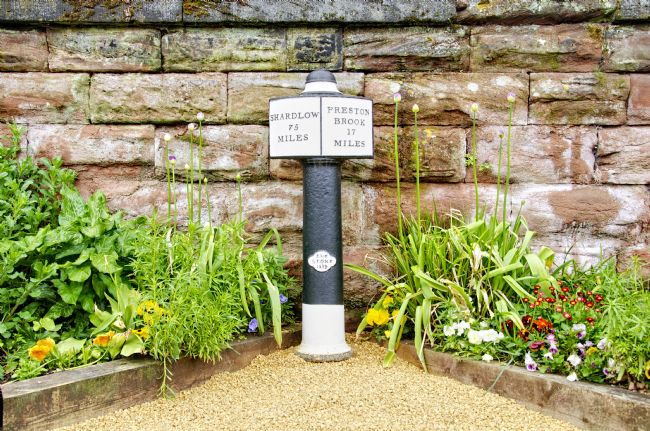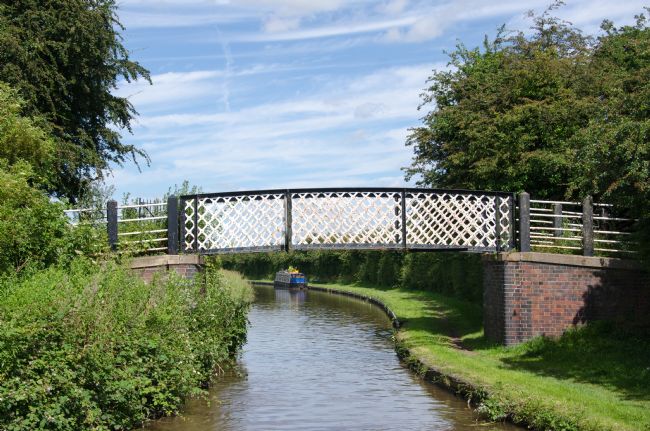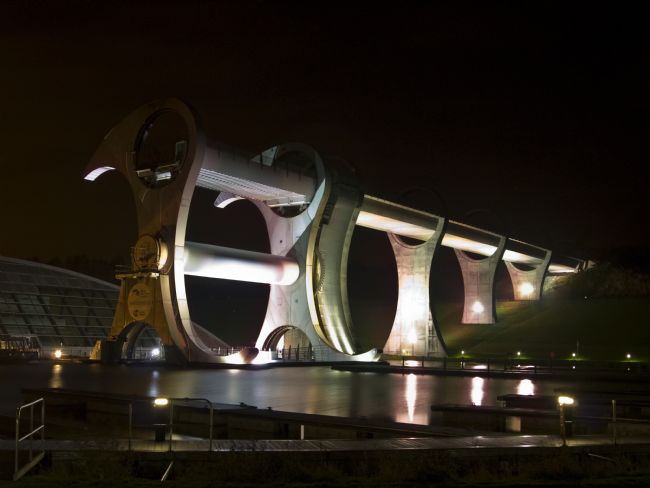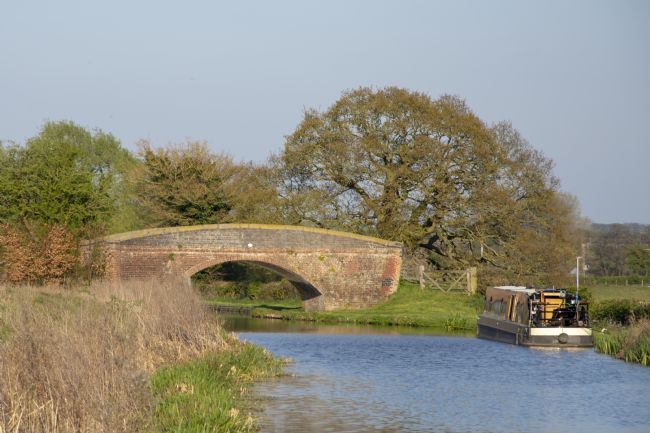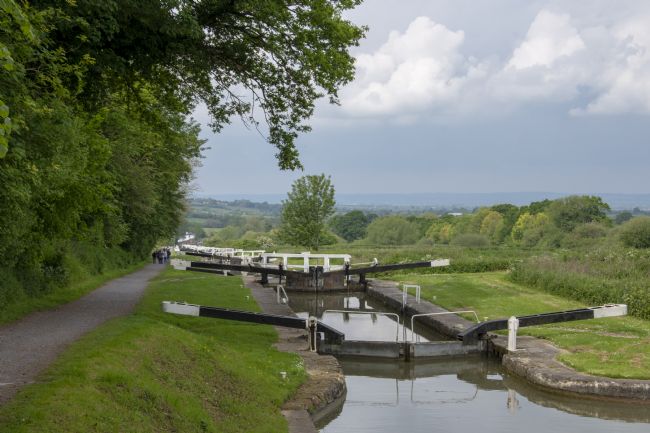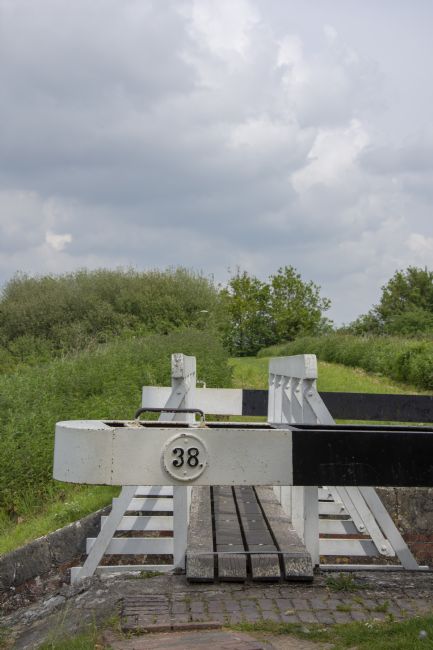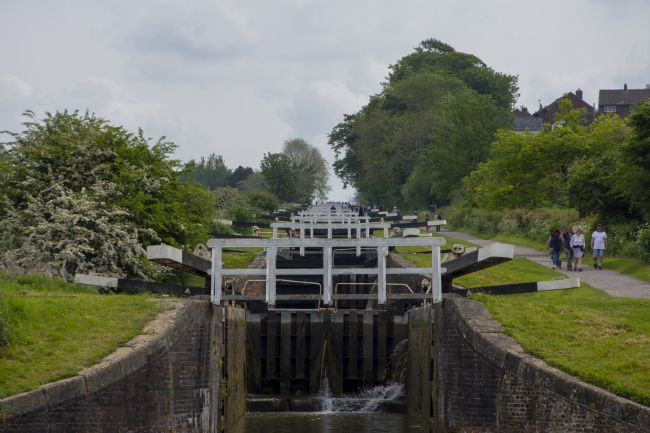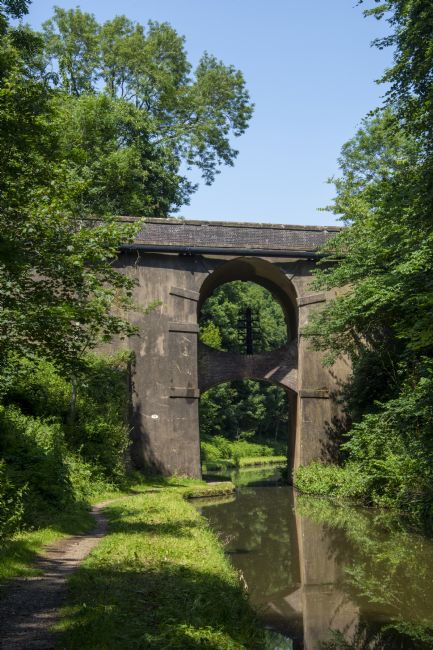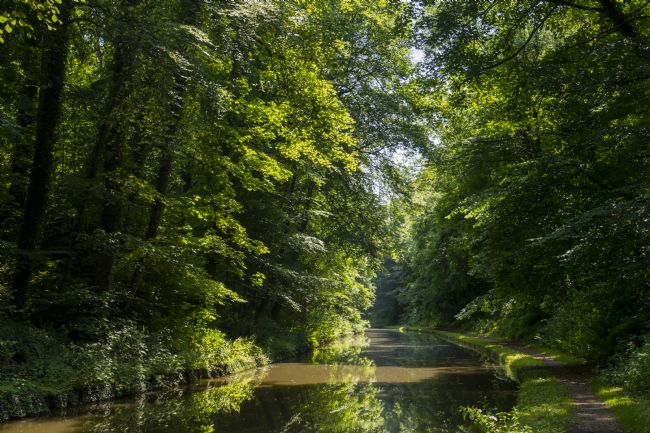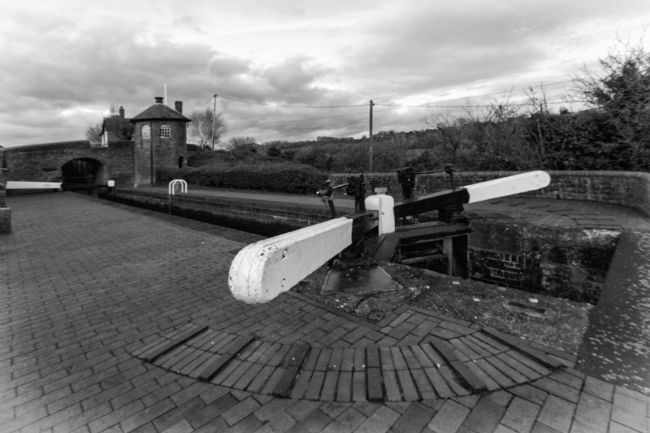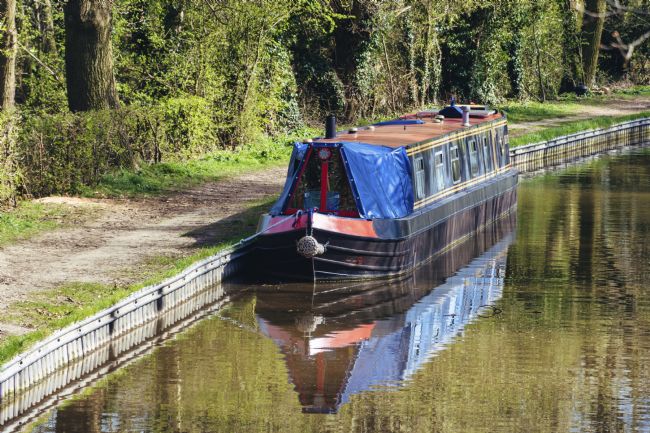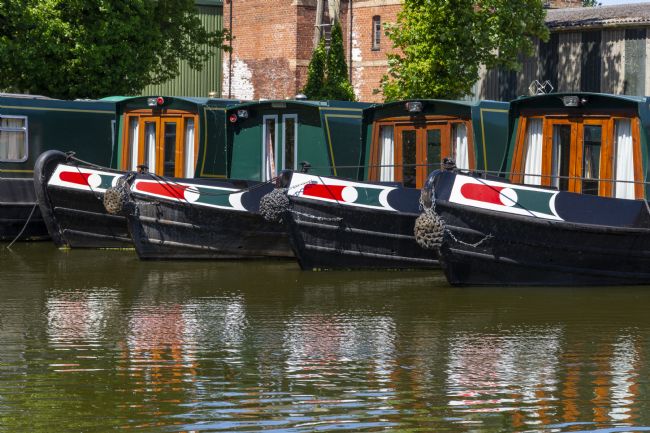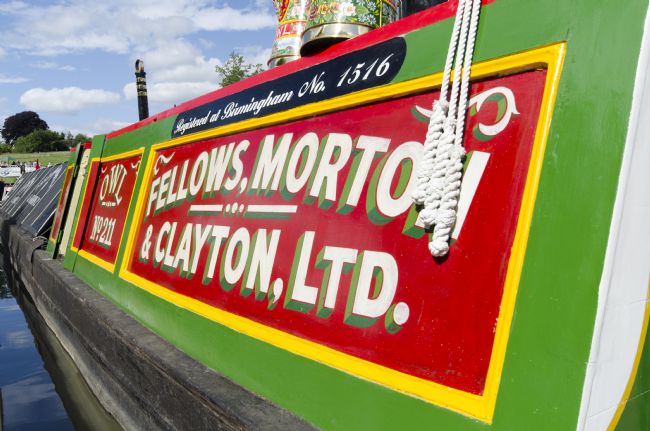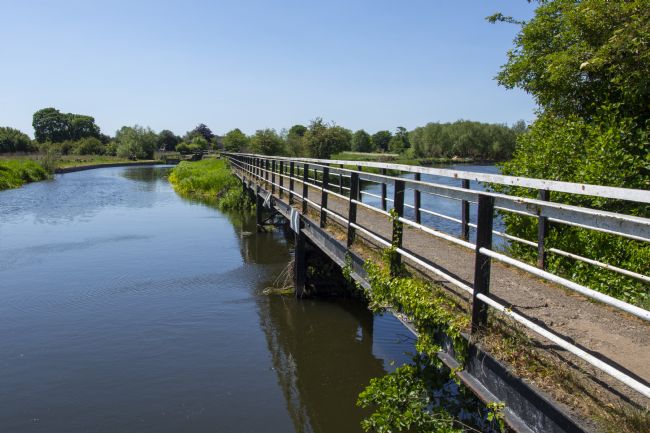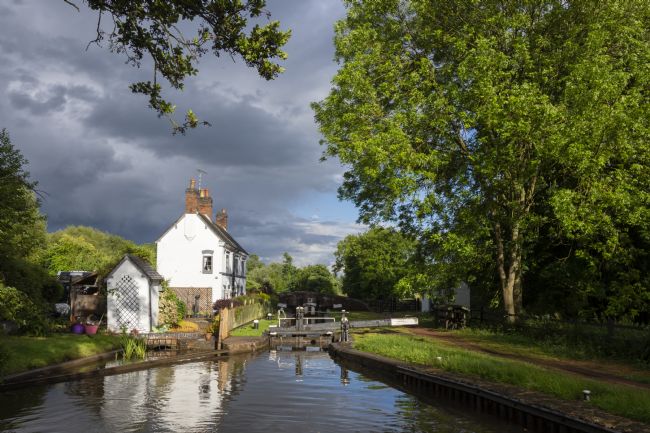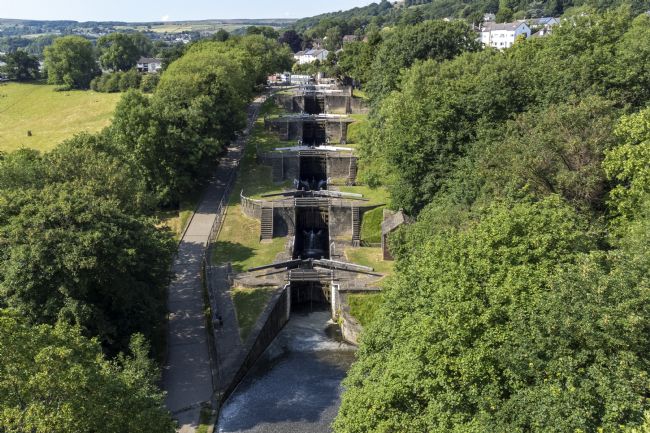The Anderton boat lift is an amazing piece of engineering dating back to 1875 and forms a link between the Trent and Mersey canal and the River Weaver some 50ft below. It worked until 1983 by which time corrosion had made it unsafe, but following massive publicity and fund raising repairs started in 2001 and it re-opened in 2002.
The Anderton boat lift is an amazing piece of engineering dating back to 1875 and forms a link between the Trent and Mersey canal and the River Weaver some 50ft below. It worked until 1983 by which time corrosion had made it unsafe, but following massive publicity and fund raising repairs started in 2001 and it re-opened in 2002.
Hawkesbury junction is where the Coventry and Oxford canals meet, often known as Sutton's Stop after one of the toll keepers who used to be stationed here. The Coventry is the older canal and thus the newer Oxford had to 'lock down' to it - give a lockful of water to the canal they join - and this gave rise to the diminutive 6 inch drop lock. No canal engineer wanted to give their expensive and hard won water to any other canal company.
Hawkesbury junction is where the Coventry and Oxford canals meet, often known as Sutton's Stop after one of the toll keepers who used to be stationed here. The Coventry is the older canal and thus the newer Oxford had to 'lock down' to it - give a lockful of water to the canal they join - and this gave rise to the diminutive 6 inch drop lock. No canal engineer wanted to give their expensive and hard won water to any other canal company.
Hawkesbury junction is where the Coventry and Oxford canals finally meet. This bridge was made by the Britannia Foundry of Derby on 1837 and just goes to show they don't make them like they used to as it's still in daily use. On the right here is the Oxford canal and on the left the slightly older Coventry. Look closely and you may notice the spray graffiti cat and poppies. This image has been edited to remove overhead power lines.
Here we see a narrowboat about to make the turn from the Coventry Canal onto the Oxford which requires a swift U turn through this 1837 iron bridge. Once a massively important commercial site the importance is now entirely due to holiday and recreational boating. This junction is also known as Sutton Stop after one of the toll keepers who used to be based here.
Hawkesbury junction is where the Coventry and Oxford canals meet, often known as Sutton's Stop after one of the toll keepers who used to be stationed here. In narrowboat terms at least the junction creates a very sharp, 'double back' which is a source of entertainment for the many onlookers often found here
The Anderton boat lift is an amazing piece of engineering dating back to 1875 and forms a link between the Trent and Mersey canal and the River Weaver some 50ft below. It worked until 1983 by which time corrosion had made it unsafe, but following massive publicity and fund raising repairs started in 2001 and it re-opened in 2002.
The Anderton boat lift is an amazing piece of engineering dating back to 1875 and forms a link between the Trent and Mersey canal and the River Weaver some 50ft below. It worked until 1983 by which time corrosion had made it unsafe, but following massive publicity and fund raising repairs started in 2001 and it re-opened in 2002.
Hawkesbury Junction is where the Coventry and Oxford canals meet, often known as Sutton's Stop after one of the toll keepers who used to be stationed here. In narrowboat terms at least, the junction creates a very sharp, 'double back' which is a source of entertainment for the many onlookers often found here.
Hawkesbury junction is where the Coventry and Oxford canals meet, often known as Sutton's Stop after one of the toll keepers who used to be stationed here. In narrowboat terms at least, the junction creates a very sharp 'double back' which is a source of entertainment for the many onlookers often found here.
This building dating back to 1821 housed a very early Newcomen steam engine that was acquired from a local mine and used to maintain water levels on the Coventry canal by means of an associated well. The engine was moved to a location in Dartmouth - but the building remains very much intact.
President is a steam powered narrowboat and part of the Black Country Living Museum display. It spends a lot of time during the boating season out and about promoting the museum, raising funds and providing educational opportunities, Seen here under bridge 1 on the Grand Union canal at the Braunston Historic Boat Gathering, Braunston, UK
When the canals were built tolls were charged for their use and to ensure fair play regular posts were placed along the route. This is on the Trent and Mersey - adding up the two distances tell you this particular canal is 99 miles long. Over many years a lot of these posts have been 'lost' but some - like this one are a proud feature.
Whitley Bridge - otherwise known as bridge 47 is on the Coventry Canal and is just one of many now disused bridges along the UK canal network. Many of these small bridges were built to accommodate the needs of farmers who needed to get to the other side of the new fangled canal as it cut through their land. This type of access bridge is thus commonly known as an accommodation bridge.
The Falkirk wheel is an impressive engineering masterpiece that uses two counterbalanced chambers in such a way only minimal electrical energy is used to raise and lower boats.
When the canals were built they often quite literally cut through farm land leaving farmers and their animals with the problem if getting from one side to the other. The bridges that were built to overcome this were done so to accommodate the farm needs and hence are called accommodation bridges.
The Caen Hill flight of locks is a major feat of canal engineering twice over - once when it was originally completed in 1810 but later fell into disrepair before being fully restored largely by volunteer fund raising and labour after it was closed to boat traffic in 1951. Overall there are some 29 locks in total on the flight, but this group of 16 are the most famous.
This delightful little bridge and lower lock gate on 38 forms a typical canal scene. The Caen Hill flight of locks is a major feat of canal engineering twice over - once when it was originally completed in 1810 but later fell into disrepair before being fully restored largely by volunteer fund raising and labour after it was closed to boat traffic in 1951. Overall there are some 29 locks in total on the flight, but this group of 16 are the most famous.
The Caen Hill flight of locks is a major feat of canal engineering twice over - once when it was originally completed in 1810 but later fell into disrepair before being fully restored largely by volunteer fund raising and labour after it was closed to boat traffic in 1951. Overall there are some 29 locks in total on the flight, but this group of 16 are the most famous.
High Bridge is on the Shropshire Union canal and is famous amongst boaters for the unusual design where a second arch was built to allow for installation of a telegraph pole - long since bereft of wires but still extant.
The Shropshire Union canal is well known for being rural and pretty. Here we see a view from bridge 39 - High Bridge. As canals were the motorways of the day the boaters needed a way of knowing where they were so every lock and every bridge had a number and or name.
Intentionally a little 'soft' this subtly toned and aged image shows Bratch Locks which are on the Staffordshire and Worcestershire canal and look at first glance to be staircase locks. In reality there is what must surely be one of the shortest pounds (gaps between locks) ever built - each is separated by just a few feet with connected side channels to help conserve water.
A single narrowboat enjoys the peace and tranquillity of the Trent and Mersey canal.
All lined up and ready to go this is a small selection of the hire boats at Great Haywood junction, Staffordshire.
The historic narrowboat Owl - painted in the colours of Fellows, Morton & Clayton and displaying some very nice rope work.
Travelling upstream from Wychnor the Trent and Mersey canal engineers made use of the River Trent for a short while and this necessitated a towpath bridge known as 1/4 mile bridge when the canal and rive split as the village of Alrewas was reached and the two went their separate ways.
Colwich Lock, number 21, on the Trent and Mersey canal is in a wonderfully rural location with just one cottage beside it. Unimaginatively called Lock Cottage. A recent downpour has lead to a darkened sky in the background whilst the following sun illuminated the lock and cottage.
Bingley five rise on the Leeds and Liverpool canal is an unusual feature where instead of each lock having both a top and bottom gate the top gate of the bottom lock is used as the bottom gate of the next one up and so on until you reach the top. This effectively creates a 1:5 climb. Nearby is a similar arrangement with just 3 interconnected locks.
